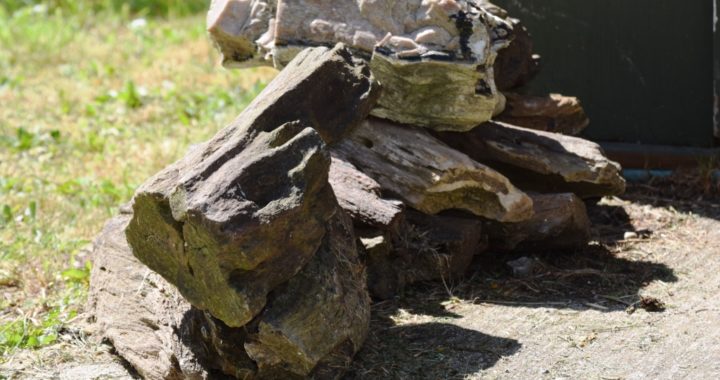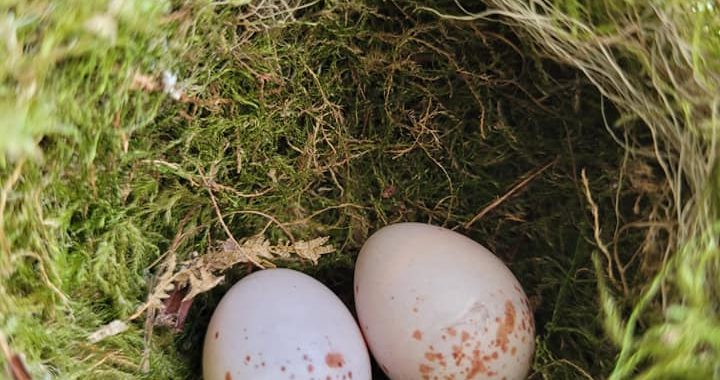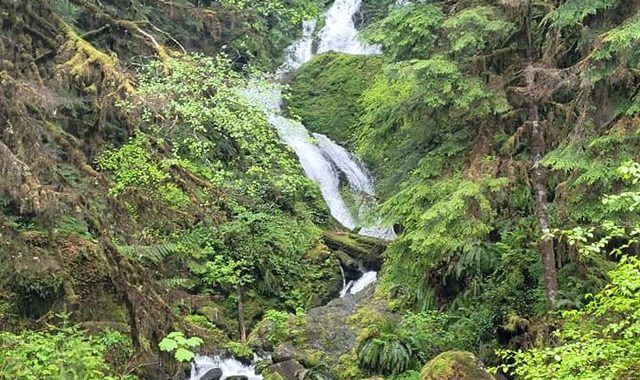Consciousness, Reincarnation, Realms

Every universe has dimensions with physical and non-physical life forms. Each dimension has realms containing consciousness and they have a light and sound spectrum with its own frequencies. Within these realms are many different beings, including the human being, that have a unique frequency and vibration depending on their density. The lower the frequency the denser the body. Frequency is the rate at which a vibration occurs that constitutes a wave, either in a material, as in sound waves, or in an electromagnetic field, as in radio waves and light.
Your consciousness expands when you direct your attention to your inner-knowing, intuition, a healthy diet, the study of spirituality, and having a regular spiritual practice. The increasing awareness enables you to establish a solid connection with your guides and angels. Positive energy attracts spirits who will assist you in your journey. Negative, also called dense energies, attract beings that can be experienced as harmful. Always ask for protection when you decide to work with energies.
In a previously written article “Consciousness Awakening, 12 Dimensions” You can read about the dimensions in our Universe. Buddhism offers us explanations about the journey of reincarnation and what form our consciousness takes according to our level of awareness.
Scattered throughout the Suttas are references to 31 distinct realms of existence. During the cycle of death and rebirth beings can temporarily stay in one of these realms. Life in the material world is bound to rebirth until the physical existence evolves beyond this need.
The 31 realms range from grim and painful hell realms all the way up to blissful and heavenly realms. According to the soul your experiences in the afterlife have to do with your level of consciousness awareness. If you believe that you’re going to hell than so it shall be until you realize that this is an illusion. In Buddhist cosmology there is no eternal heaven of hell. Beings are born into a particular realm according to their past karma.
The 31 realms in Buddhist cosmology are all clustered in layers around Mount Meru, which is a sacred mountain with five peaks. Mount Meru is considered to be the center of all the physical, metaphysical and spiritual universes. Mount Meru is also associated with the chakras and kundalini. For more information on this go to the article “Heart, Anahata, Chakra“.
The realms of existence can be divided into three distinct “worlds” called Lokas.
The Kama-Loka also called the sensuous world is “our” world. this is the world of desire, samsara, or karma. When Buddhists speak about the six realms they refer to the Kama-Loka which is represented on the wheel of life. The sensuous world is the lowest of the three worlds and the driving force in this realm is sensual desire. Being born into this realm happens as a result of giving and moral disciplines. Anyone who has led a wholesome life can be born in this realm.
The Devas, also called angels, of this world enjoy long life, beauty, and certain powers. People who believe in Heaven go to this plane. Those who realize that there is no such thing as heaven or hell will move out of this realm to be reborn elsewhere.
Kama-Loka is the first distinct world can be divided into the Lower and Higher Kama Loka which are part of the physical realm. The first four realms are states of deprivation. Rebirth into these realms are a result from unwholesome conduct. The beings in here have no moral sense and overall they can’t create good karma. When these realms of misery are exhausted and the being is ready to embrace love and light they can be reborn elsewhere.
States of deprivation
- This 1st. realm is called Hell. It should not be confused with the eternal hell mentioned in other religious traditions. As in every realm, one’s time here is temporary.
- The 2nd. realm inhabits animals. This includes all forms of life such as insects, fish, birds, worms, and all animals, that are visible to humans under ordinary circumstances.
- The 3rd Realm inhabits ghosts and hungry shades. Ghosts and unhappy spirits wander hopelessly about this realm searching in vain for sensual gratification.
- 4th Realm inhabit asuras who are benevolent Devas. The demons that dwell here are engaged in endless conflicts with each other.
Lower Kama-Loka
The Devas in the Lower Kama live on different parts of Mount Meru at the center of the world, see the image above. These Devas are more passionate than the higher Devas and they enjoy and engage in strife and fighting.
- The 5th realm houses Human beings. A birth in this realm results from moral discipline and moral choice and destiny can be guided here. In this realm you will see a unique balance of pleasure and pain and this facilitates the development of virtue and wisdom. This wisdom is needed to liberate yourself from the cycle of rebirths. It is for this reason that being born as a human is considered to be precious. When you respect life and stay away from killing and harming others you will be reborn in a heavenly realm. Injuring others can lead to a rebirth in the states of deprivation.
- The 6th realm is called the Four Great Kings. These kings guard the four quarters of the earth. Devas who guide the sun and the moon are also part of this realm. This world is also home to the four types of earthly demigod also called nature-spirits. These spirits inhabit remote areas such as forests, hills, and abandoned caves. They can attain the spiritual life by awakening through suffering and misery.
- The 7th realm houses 33 Gods who live on the peak of Sumeru. They are like the Olympian Gods and their ruler is Sakka, also called Sakra. He is a devotee of the Buddha and rules by righteousness, patience, and compassion. The Devas and Sakka honor the sages and holy men. By fulfilling seven vows which embody the standards of the virtuous householders, while he was still a human being, Sakka earned his place as a ruler of the Devas. Sakka’s patience and forgiveness serves as a model for the ordained male monk. Besides the 33 Gods, many other Devas and supernatural beings dwell here, including the attendants of the Devas and many nymphs.
Higher Kama-loka. The Devas in the Higher Kama-Loka live in four heavens that float in the air. They are free from contact with the strife of the lower world.
- The 8th realm is home to Yama Devas who are free of all difficulties in life. These Devas live in the air.
- The 9th realm houses Contented Devas. Among them is the future teacher of the world called Maitreya who is also known as Christ. In Hinduism Maitreya is called Krishna. The 9th realm is where Krishna dwells with others who are motivated by great compassion. These compassionate spirits are called Bodhisattvas and they attain to achieve Buddhahood for the benefit of all sentient beings.
- The 10th Realm is called the heaven of pleasant transformation. It is home to Devas who delight in the sense objects of their own creation. They have the ability to change their appearance to please themselves. The God of this realm is called Sunirmita.
- The 11th realm is home to Devas who wield power over the creation of others. The Devas here don’t create pleasing forms but their desires are fulfilled by the acts of other Devas who seek to favor them. Mara, a demonic celestial king associated with death, rebirth, and desire, lives here.
The Rupa-Loka, The Fine-material world is the second distinct world and it’s the world of form. The beings here have very subtle forms that are invisible to most other beings. There are five primary realms within the Rupa-Loka that also have a number of sub-realms. The primary realms are Brahma, Abhasvara, Subhakrtsna, Brhatphala, and Suddhavasa. Certain Devas with godlike characteristics correspond with these realms.
The first primary realm of the Rupa-Loka is the Brahma Realm
Like all beings, the Brahma, are still tied to the cycle of rebirth. Their consciousness corresponds to the first mental state of the mind which is called Jhana. In total, there are four mental stages to achieve. There are several ways to be reborn in the Brahma realm and these are the mastery over the mind and by mastering meditations on loving kindness, compassion, altruistic joy, and equanimity. Non of the above methods remain when the release of the mind in equanimity is developed and this is the method to be born with Brahma.
- The 12th realm is home to the attendants accompanying Brahma who is the creator God. These Devas are Councilors and they belong to the assembly of Brahma.
- The 13th realm is home to the ministers of Brahma. These beings from the Abhasvara realms who are born as companions to Brahma after he spent some time alone.
- The 14th realm is home to Great Brahmas. A great Brahma is a being from the Abhasvara realms who falls into a lower realm through exhaustion of his merits and is reborn alone in the Brahma realm. By doing so, the Great Brahma, forgets his former existence. He imagines himself to come into existence without a cause. His delusion leads him to regard himself as the all-powerful, all-seeing creator of the Universe.
The second primary realm of the Rupa-Loka is the Abhasvara realm
The following three Sub-realms are a result of attaining the second mental state of Jhana. The Devas in this realm are characterized by delight as well as joy.
- Realm 15 is home to Devas of limited radiance
- Realm 16 is home to Devas of unbounded radiance
- The 17th realm is home to Devas of streaming radiance
The third primary realm of the Rupa-Loka is the Subhakrtsna realmThe following three sub-realms are a result of attaining the third mentals state of Jhana. The Devas in this realm are characterized by a quiet joy. Their bodies radiate a steady light.
- The 18th realm has Devas of limited glory. It is the realm of Devas of limitless beauty
- The 19 realm has Devas of unbounded glory. It also has Devas of limitless beauty
- The 20th realm is home to Devas of refulgent glory
The fourth primary realm of the Rupa-Loka is the Brhatphala Realm. The following two sub-realms are the result of attaining the fourth mental state of Jhana. The perfect state of equanimity and awareness is achieved when all of the four Jhanas are mastered. The beings in the following realms remain in the tranquil state which is attained in the fourth Jhana.
- The 21st realm is home to very fruitful Devas. Buddha said that the fruitful Devas and monks have a life-span of 500 eons.
- The 22nd realm is home to unconscious beings. This is the realm of mindless beings that only have bodies without consciousness. Rebirth in this realm results from a meditative practice aimed at the suppression of consciousness. Those who take up this practice assume that release from suffering can be achieved by attaining unconsciousness. However, The being passes away after the life span in this realm ends and it will be reborn in another realm where consciousness returns
The fifth primary realm of the Rupa-Loka is the SuddhavasaThe Suddhavasa, also called the Pure Abodes, are different from the other realms of the Rupa-Loka. These realms don’t house beings that were born here through ordinary merit or meditative attainments because they completed the four mental states of Jhana. Those who take rebirth here are called the Non-Returners since they’ve attained final Nirvana from which you can’t return. The births in these five sub-realms are a result of attaining the fruit of non-returning which is also called the third level of enlightenment. The beings in these realms guard and protect Buddhism on earth. They will pass into enlightenment when they pass away from the Suddhavasa worlds. Among its inhabitants is Brahma who begs the Buddha to teach Dharma to the world.
- The 23rd realm is that of Devas not falling away. It is the most common destination for Buddhist religious practitioners. Many achieve the end of the spiritual path directly in this world and some pass away and are reborn in the sequentially higher realms of the pure abodes until they are at last reborn in the realm of the devas “equal in rank”
- The 24th realm is home to the untroubled devas for whose company those of the lower realms long.
- The 25th realm is home to the “Beautiful” Devas. It is said to be the place of rebirth for five kinds of Buddhist religious practitioners who died just short of attaining the state of Arhat. Arhat is the end of the spiritual path.
- The 26th realm is home to Clear-sighted Devas who live in a realm similar to and friendly with the realm of devas “un-equal in rank”.
- The 27th house the Peerless devas. This is the realm of devas “un-equal in rank”. This is the highest of all the Rupa-Loki realms and it’s often referred to the highest extreme of the universe. The current ruler of Heaven will eventually be born here.
The third distinct world is the immaterial world called the Arupa-Loka. The sub-realms of this world are called the formless realms. the inhabitants are possessed entirely of mind and have no physical body or location. You may have heard the following statement: The universe is mental, which refers to the Arupa-Loka. The beings in this world don’t interact with the rest of the universe and they are unable to hear Buddha’s teachings. They achieve these levels by staying formless in a previous life. They will enjoy the fruits of good karma for a period of time and are then reborn in the lower planes for a new cycle of reincarnation.
The four sub-realms of the Arupa-Loka are
- The 28th realm is the sphere of infinite space. Rebirth in this plane is a result of attaining the first formless
- The 29th realm is the sphere of infinite consciousness. Rebirth in this plane is a result of attaining the second formless. In this sphere formless beings dwell meditating on their consciousness as infinitely pervasive
- The 30th realm is the Sphere of Nothingness. Rebirth in this plane is a result of attaining the third formless in a previous life. This is considered a form of perception, though a very subtle one
- The 31st realm is the sphere of neither perception nor non-perception. The beings in this plane only have mind and no physical body.
 Channeling and Predictions
Channeling and Predictions  Transitioning Consciousness
Transitioning Consciousness  Insecurity and Authenticity
Insecurity and Authenticity  Spiritual Awakening, Mental Illness
Spiritual Awakening, Mental Illness  Ascension, Pleiadians, Creation, Consciousness
Ascension, Pleiadians, Creation, Consciousness  Vibration, Consciousness, The Universal Spiritual Laws, Reality
Vibration, Consciousness, The Universal Spiritual Laws, Reality  Healing
Healing  Love, The Authentic Self, Lightworker
Love, The Authentic Self, Lightworker  The Soul, Energy, Pandemic, Fear and Love
The Soul, Energy, Pandemic, Fear and Love